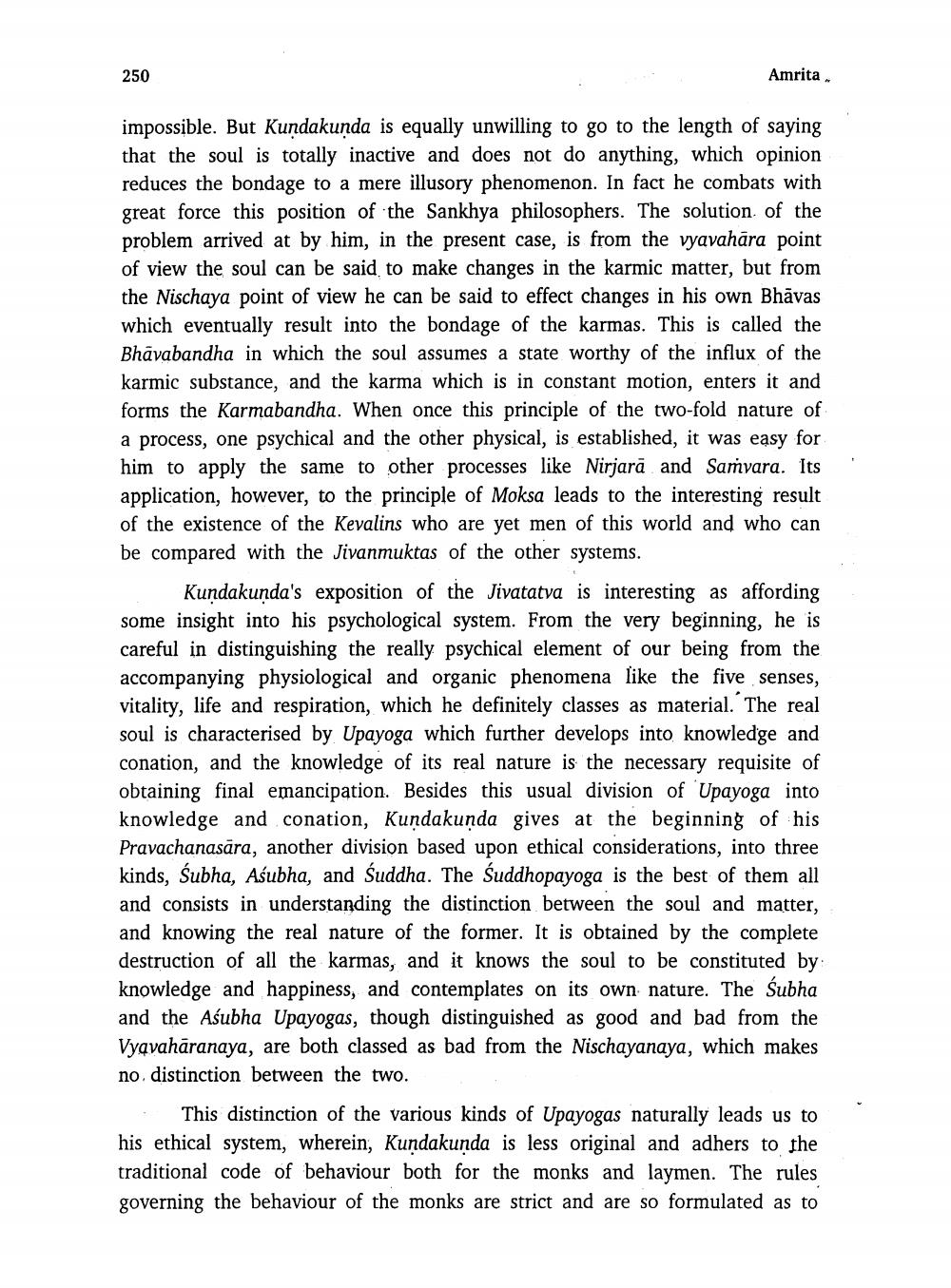________________
250
Amrita
impossible. But Kundakunda is equally unwilling to go to the length of saying that the soul is totally inactive and does not do anything, which opinion reduces the bondage to a mere illusory phenomenon. In fact he combats with great force this position of the Sankhya philosophers. The solution of the problem arrived at by him, in the present case, is from the vyavahāra point of view the soul can be said to make changes in the karmic matter, but from the Nischaya point of view he can be said to effect changes in his own Bhāvas which eventually result into the bondage of the karmas. This is called the Bhāvabandha in which the soul assumes a state worthy of the influx of the karmic substance, and the karma which is in constant motion, enters it and forms the Karmabandha. When once this principle of the two-fold nature of a process, one psychical and the other physical, is established, it was easy for him to apply the same to other processes like Nirjarā and Saṁvara. Its application, however, to the principle of Moksa leads to the interesting result of the existence of the Kevalins who are yet men of this world and who can be compared with the Jivanmuktas of the other systems.
Kundakunda's exposition of the Jivatatva is interesting as affording some insight into his psychological system. From the very beginning, he is careful in distinguishing the really psychical element of our being from the accompanying physiological and organic phenomena like the five senses, vitality, life and respiration, which he definitely classes as material. The real soul is characterised by Upayoga which further develops into knowledge and conation, and the knowledge of its real nature is the necessary requisite of obtaining final emancipation. Besides this usual division of Upayoga into knowledge and conation, Kundakunda gives at the beginning of his Pravachanasāra, another division based upon ethical considerations, into three kinds, Subha, Aśubha, and Suddha. The Suddhopayoga is the best of them all and consists in understanding the distinction between the soul and matter, and knowing the real nature of the former. It is obtained by the complete destruction of all the karmas, and it knows the soul to be constituted by: knowledge and happiness, and contemplates on its own nature. The subha and the Aśubha Upayogas, though distinguished as good and bad from the Vyavahāranaya, are both classed as bad from the Nischayanaya, which makes no distinction between the two.
This distinction of the various kinds of Upayogas naturally leads us to his ethical system, wherein, Kundakunda is less original and adhers to the traditional code of behaviour both for the monks and laymen. The rules governing the behaviour of the monks are strict and are so formulated as to




